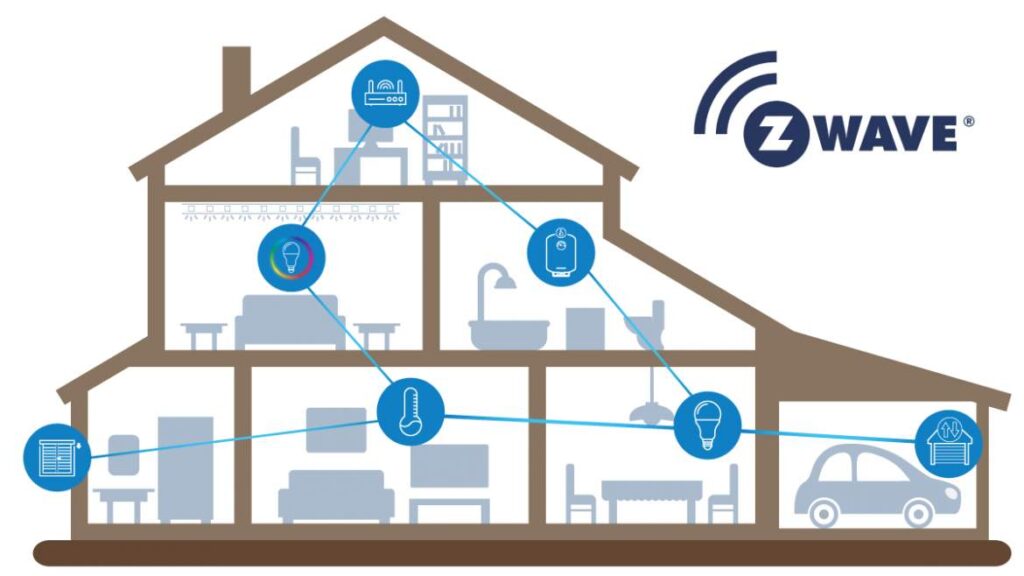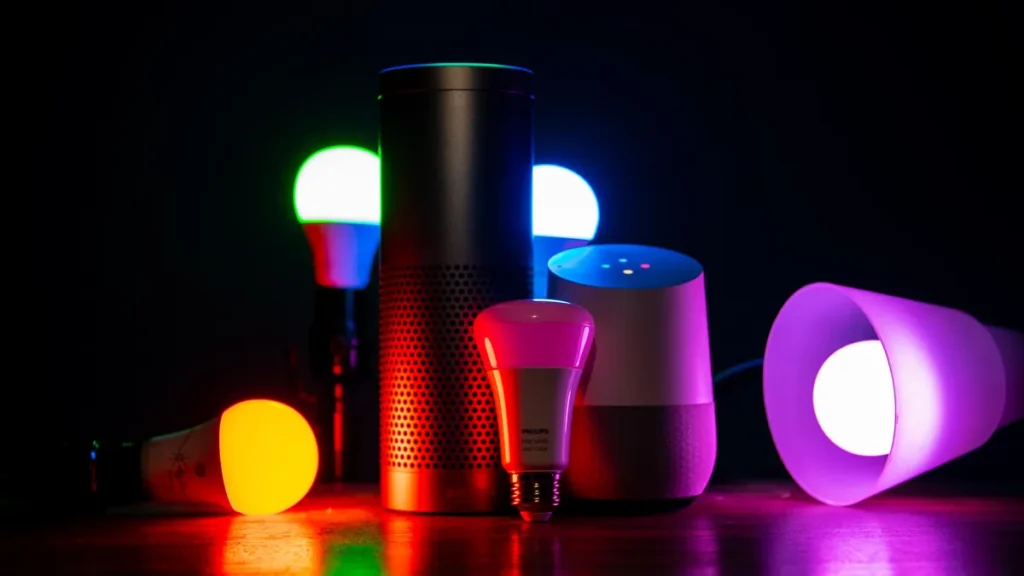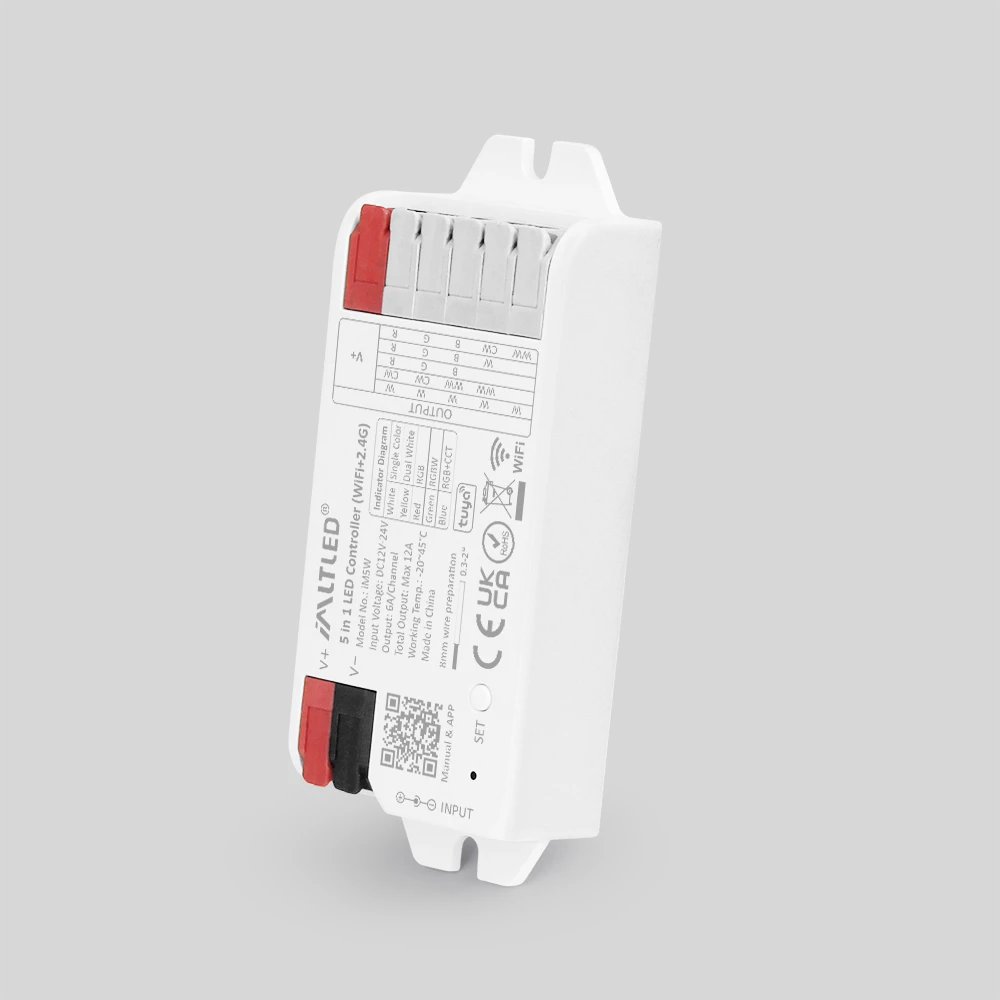In the rapidly evolving landscape of smart home technologies, wireless communication protocols play a pivotal role in ensuring seamless device interoperability, reliability, and user convenience. Among these protocols, Z-Wave has established itself as a dominant force, particularly in the domain of smart lighting. This article delves into what the Z-Wave protocol is, its technical foundation, and the why and how of its applications within the smart lighting sector.
What is Z-Wave Protocol?
Z-Wave is a wireless communication protocol specifically designed for home automation. It enables smart devices to communicate with one another, forming a mesh network that enhances coverage and reliability. The Z-Wave protocol operates on low-power radio frequency signals, typically in the sub-1 GHz radio band (around 908.42 MHz in the US, and 868.42 MHz in Europe), which reduces interference with traditional Wi-Fi or Bluetooth networks that operate on higher frequency bands (2.4 GHz).
Developed initially in 1999 by a Danish company called Zensys, Z-Wave has grown into an industry standard governed by the Z-Wave Alliance. The protocol supports secure communication with AES-128 encryption and allows interoperability between devices from different manufacturers that comply with the Z-Wave standard.
Key Features of Z-Wave Protocol
- Mesh Networking:
Z-Wave devices function as nodes within a mesh network. Each node can retransmit signals to other nodes, extending the coverage beyond the range of a single device. This feature significantly enhances the reliability and reach of a home automation system, especially critical in larger homes. - Low Power Consumption:
Designed for battery-operated devices and low-energy consumption, Z-Wave devices are ideal for sensors, smart switches, and lighting controls that require long battery life. - Interoperability:
Z-Wave guarantees interoperability among certified devices by adhering to a standardized application layer, enabling consumers to mix devices from various brands seamlessly. - Security:
The protocol incorporates advanced AES-128 encryption, ensuring safe communication resistant to hacking or unauthorized control. - Scalability:
A Z-Wave network can support up to 232 nodes, making it suitable for everything from small apartments to comprehensive smart homes.
Z-Wave in the Context of Smart Lighting
Lighting is one of the earliest and most widely adopted applications in smart home automation, due to its immediate impact on ambiance, convenience, and energy savings. The application of Z-Wave in this space is extensive and multifaceted.
Smart Light Bulbs and Fixtures
Z-Wave-enabled light bulbs and lighting fixtures are designed to be directly controllable via a Z-Wave hub or gateway. Users can turn lights on or off, dim them, or even change color temperature (in the case of tunable white or color changing bulbs) remotely through a smartphone app, voice assistant, or automated scenes.
Advantages:
- Reliable Wireless Control: The mesh network ensures that commands sent to the bulb can reach it even if the bulb itself is not within the direct radio range of the controller.
- Energy Efficiency: Because Z-Wave operates at lower frequencies, it consumes less power than Wi-Fi options, benefiting both battery-powered lighting controls and energy-conscious homeowners.
Wall Switches and Dimmer Modules
For households that prefer retaining their existing light fixtures while upgrading to smart control, Z-Wave offers smart switches and dimmer modules. These devices replace traditional wall switches and enable smart control without rewiring fixtures or changing bulbs.
Benefits include:
- Backward Compatibility: Compatible with existing lighting setups (incandescent, CFL, LED).
- Physical and Remote Control: Users can control light manually or remotely without losing either option.
- Scene Integration: Switches can be programmed to work as part of home automation scenes, coordinating lights with other devices (e.g., motion sensors or security alarms).
Smart Lighting Scenes and Automation
Z-Wave excels at automations and scenario-based lighting, enabling homeowners to create complex sequences that enhance convenience, security, and energy savings.
Examples include:
- Occupancy-Based Lighting: Lights automatically turn on when a motion sensor detects presence and turn off after inactivity.
- Adaptive Lighting: Lights can mimic natural circadian rhythms by gradually adjusting brightness and color temperature throughout the day.
- Security Lighting: Z-Wave lights can be programmed to simulate occupancy when residents are away, deterring intruders.
The advantage of the Z-Wave mesh network here is the ability to coordinate multiple devices reliably with minimal latency and interference.
Integration with Smart Home Ecosystems
Z-Wave’s compatibility with major smart home hubs (e.g., SmartThings, Hubitat, Vera, and others) allows smart lighting systems to interact with other home automation components such as thermostats, security systems, and voice assistants (Amazon Alexa, Google Assistant).
This holistic integration supports unified control interfaces and voice command functionality, making user experience intuitive and efficient.
Why Choose Z-Wave for Smart Lighting?
While other wireless protocols like Zigbee or Wi-Fi are also popular in smart lighting, Z-Wave carries distinct advantages:
- Less Interference: Operating on a lower frequency band, Z-Wave signals are less prone to interference with congested Wi-Fi environments.
- Robust Mesh Networking: The ability of each node to relay signals extends network range and resilience, which is crucial for lighting devices spread throughout a home.
- Security: Z-Wave’s secure communication protocol addresses privacy and safety concerns critical in connected home environments.
- Proven Ecosystem: A vast marketplace of certified devices ensures plenty of options for consumers and installers alike.
Challenges and Considerations
Despite its strengths, certain challenges exist for Z-Wave, particularly in smart lighting applications:
- Higher Cost: Z-Wave modules tend to be more expensive than some Zigbee or Wi-Fi counterparts.
- Lower Data Throughput: Z-Wave is optimized for low bandwidth, sufficient for lighting control but less suited for high-data applications.
- Device Availability: While extensive, the Z-Wave device ecosystem is smaller compared to Wi-Fi or Zigbee ecosystems.
Thus, decisions about protocol choice must weigh these considerations against user priorities.
Conclusion
The Z-Wave protocol represents a mature, reliable, and secure wireless communication standard tailored for home automation, with smart lighting being one of its most potent use cases. Its mesh networking capability, low power consumption, and strong security measures make it particularly well-suited to controlling diverse lighting devices in modern homes.
For homeowners and integrators aiming to build scalable, low-interference, and interoperable smart lighting systems, Z-Wave remains a compelling choice. As smart homes evolve, the role of robust protocols like Z-Wave in delivering user-friendly, reliable, and energy-efficient lighting solutions will only continue to grow.


